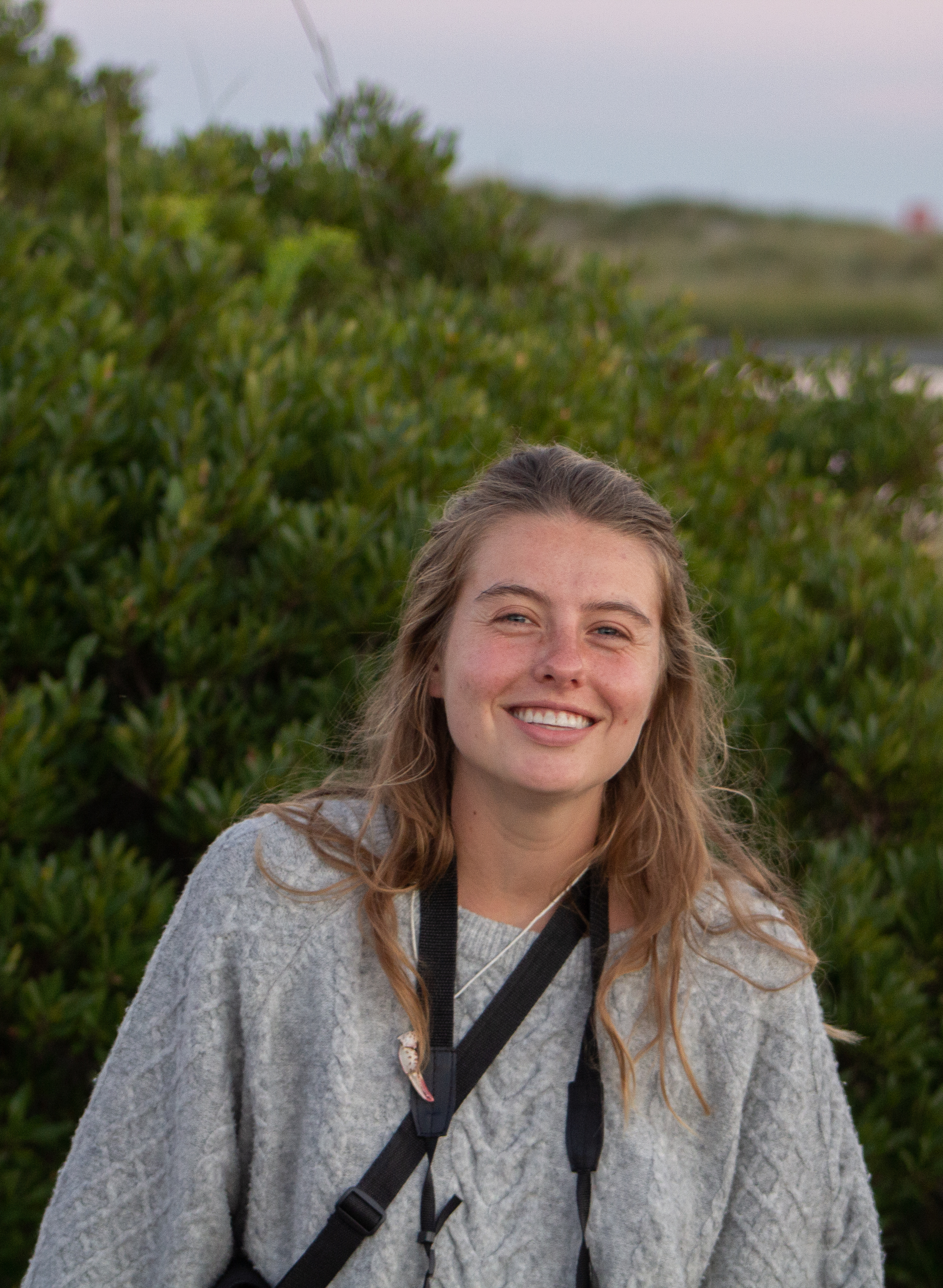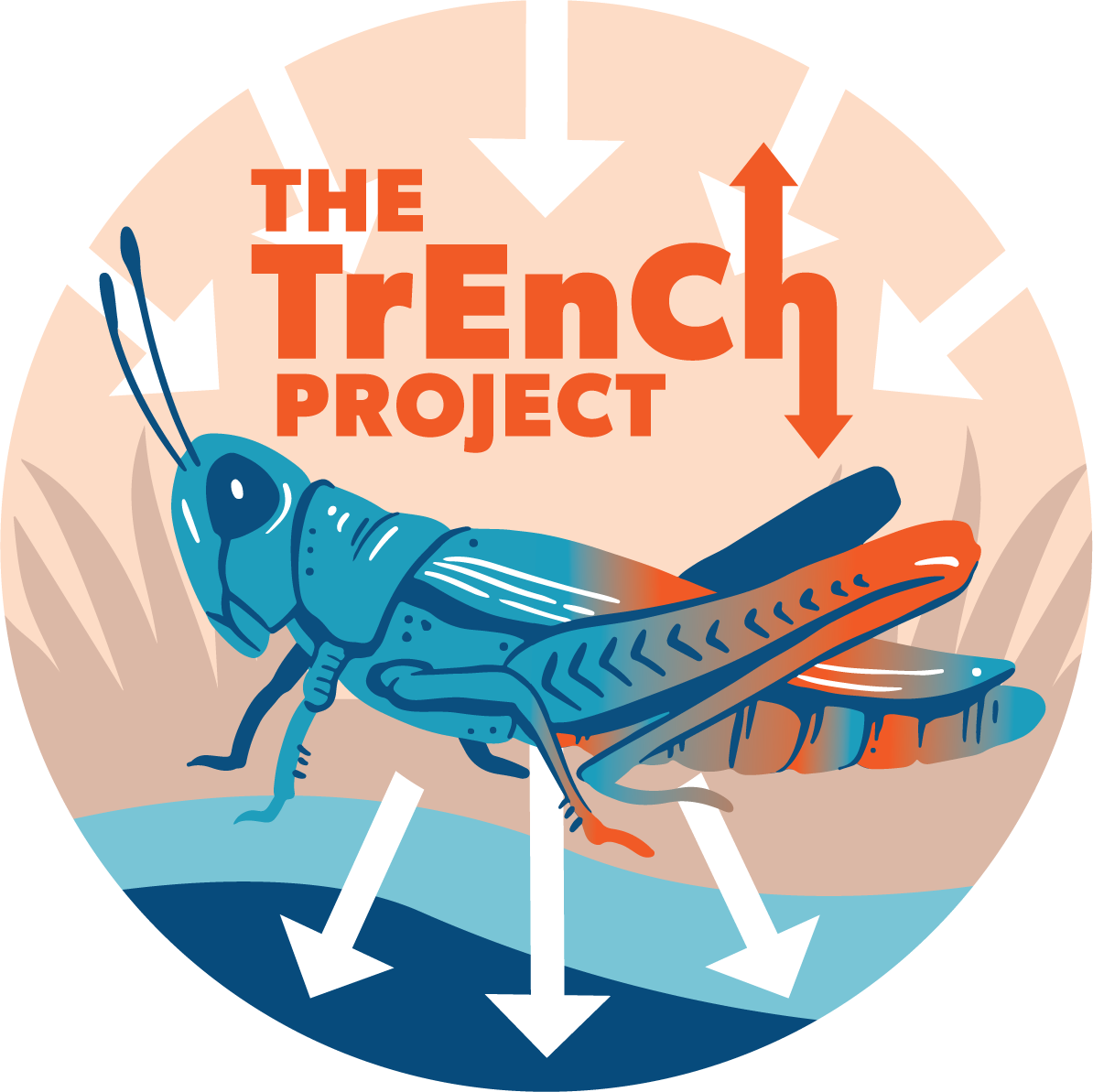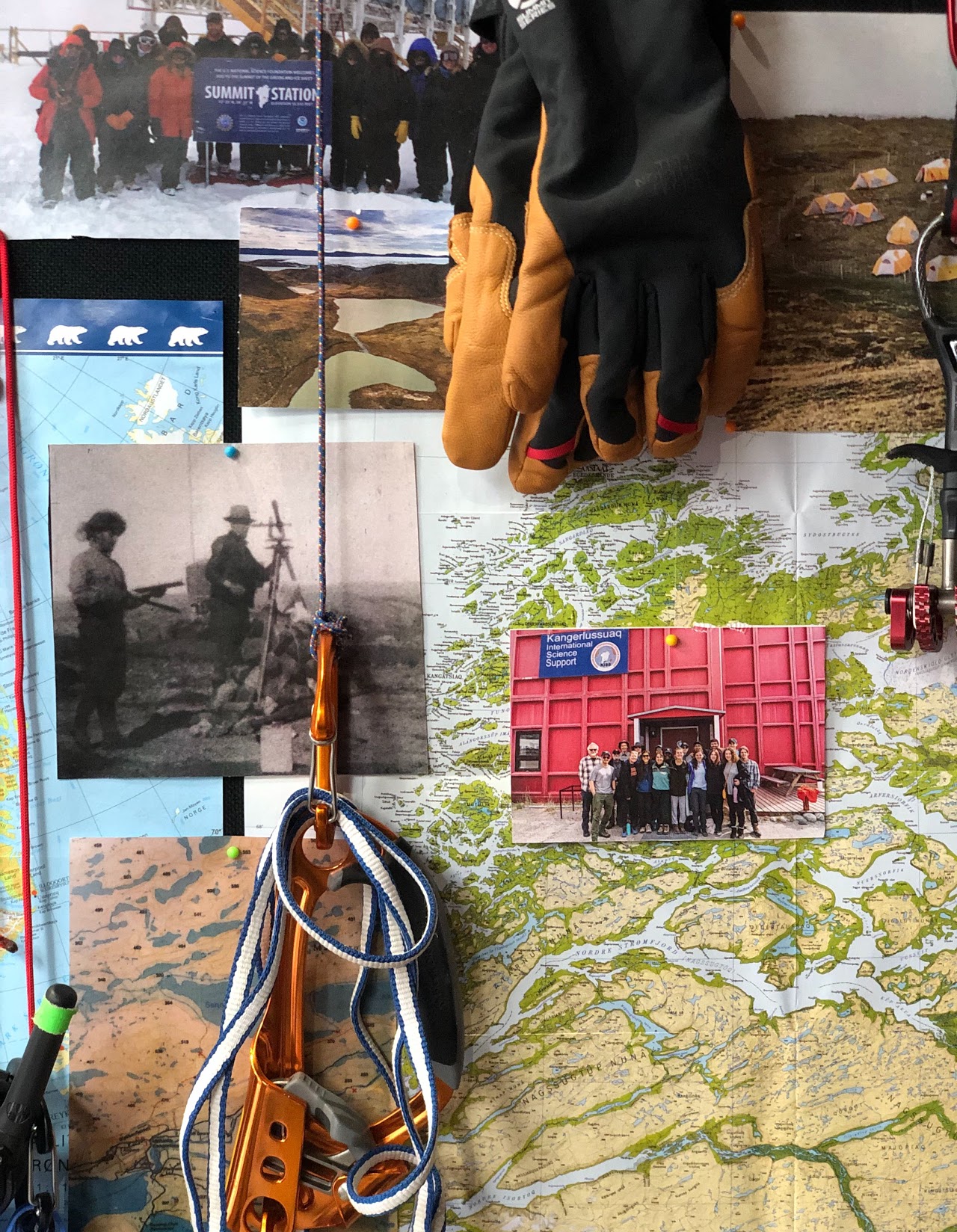About

Hi! I'm Abby. I grew up in the pine barrens of New Jersey, and I'm currently living in Santa Barbara, California, working for University of California Santa Barbara. For work, I am a geospatial analyst withSeaSketch.
I have my B.S.E. fromUniversity of Michiganwith a specialty in software engineering for ecology research. During my undergraduate, I worked with multipleecology labs on their research projects,including wetland plant invasion modelling, lake-effect snow modelling, and a survey of forested landowners. Please feel free to review mycoursework and CV.
I am passionate about sustainable agriculture and botany, and have been lucky to work onmultiple amazing farms.
I also spend timetaking photos and flying a drone around.
I was the2020 recipient of the Wallenberg Fellowship,and spent 2022 based in Qaqortoq, Greenland, working with arctic land stewards.

Collaborative Marine Spatial Planning
SeaSketch puts powerful tools into the hands of ocean planners, stakeholders and the public that were once limited to GIS professionals, enabling participatory marine spatial planning processes that are closely tied to the relevant science and information. SeaSketch is being used around the globe in small agency teams and large community-driven initiatives to make better management decisions every day.
I work as a geospatial analyst and web developer for SeaSketch, working with in-country teams to create analytical reports and planning tools for their marine spatial planning efforts.
We are partners with theBlue Prosperity Coalitionand are working towards 30x30. All of our work is open source -- check us out onGithub!
Previous work: The Trench Project

TrEnCh: Tools for TRanslating ENvironmental CHange into
organismal responses
I worked with the Trench Project for two years, working on case
studies of how animals are impacted by climate change to improve
approaches to climate change biology education, policy, and
research. I co-authored two scientific papers with the Trench
Project.
I was lead developer ofTrEnCh-IR.TrEnCh-IR is a repository and set of analysis tools for FLIR
infrared images. This repository is intended to advance
applications of thermal images in understanding how organisms
interact with their thermal environments and resultant patterns
of thermal stress. TrEnCh-IR is focused on 1) offering free,
unlimited conversion of FLIR jpgs to access raw thermal images,
embedded images, thermal parameters, and palettes, 2)
maintaining an easy-access, diverse thermal image repository for
use in education, research, and all other capacities, and 3)
educating on how organisms respond to their thermal environment.
TrEnCh-IR It is built on Azure with Block Blob Storage, Node.js,
Bootstrap, {{mustache}}, and exiftool. TrEnCh-IR services are in
collaboration with ThermImageR and the Thermal Ecology Group.
I worked onTrEnCh-R,an R package for modular and accessible microclimate and
biophysical ecology. I also edited the accompanyinglearning modules.
TrEnCh-Edis the educational branch of The TrEnCh Project, which builds
computational and visualization tools to Translate Environmental
Change into organismal responses. TrEnCh-Ed is designed to be
utilized in high school science classrooms, bringing the cutting
edge science of university climate change research to the next
generation of scientists. I worked with the Dr. Buckley to
update the website and visualizations, add teacher resources and
educational standards, create answer keys for lesson plans, and
assist the readying of the curriculum for use in the 2020 school
year. I co-created the Marine Range Shifts visualization, and
have edited all other visualizations.

TrEnCh: Tools for TRanslating ENvironmental CHange into organismal responses
I worked with the Trench Project for two years, working on case studies of how animals are impacted by climate change to improve approaches to climate change biology education, policy, and research. I co-authored two scientific papers with the Trench Project.
I was lead developer ofTrEnCh-IR.TrEnCh-IR is a repository and set of analysis tools for FLIR infrared images. This repository is intended to advance applications of thermal images in understanding how organisms interact with their thermal environments and resultant patterns of thermal stress. TrEnCh-IR is focused on 1) offering free, unlimited conversion of FLIR jpgs to access raw thermal images, embedded images, thermal parameters, and palettes, 2) maintaining an easy-access, diverse thermal image repository for use in education, research, and all other capacities, and 3) educating on how organisms respond to their thermal environment. TrEnCh-IR It is built on Azure with Block Blob Storage, Node.js, Bootstrap, {{mustache}}, and exiftool. TrEnCh-IR services are in collaboration with ThermImageR and the Thermal Ecology Group.
I worked onTrEnCh-R,an R package for modular and accessible microclimate and biophysical ecology. I also edited the accompanyinglearning modules.
TrEnCh-Edis the educational branch of The TrEnCh Project, which builds computational and visualization tools to Translate Environmental Change into organismal responses. TrEnCh-Ed is designed to be utilized in high school science classrooms, bringing the cutting edge science of university climate change research to the next generation of scientists. I worked with the Dr. Buckley to update the website and visualizations, add teacher resources and educational standards, create answer keys for lesson plans, and assist the readying of the curriculum for use in the 2020 school year. I co-created the Marine Range Shifts visualization, and have edited all other visualizations.
Publications
The Wallenberg Fellowship

I was fortunate in being selected for theWallenberg Fellowship,which granted me this unique opportunity.
Greenland was introduced to me through my participation in the 2019 Greenland Expedition hosted by faculty from the Climate and Space Sciences and Engineering Department. In March of 2022 (delayed by the Covid pandemic), I returned to Greenland with a project co-created by UNESCO Kujataa and local land stewards.
Qaqortoq, a town of three thousand and the fourth-largest town in Greenland, was the main location of my work. UNESCO Kujataa "is a subarctic farming landscape located in the southern region of Greenland. It bears witness to the cultural histories of the Norse farmer-hunters who started arriving from Iceland in the 10th century and of the Inuit hunters and Inuit farming communities that developed from the end of the 18th century. Despite their differences, the two cultures, European Norse and Inuit, created a cultural landscape based on farming, grazing and marine mammal hunting. The landscape represents the earliest introduction of farming to the Arctic, and the Norse expansion of settlement beyond Europe." Working with UNESCO Kujataa and Innovation South Greenland in the summer of 2022, I created 2D and 3D maps of key ruins to use as baselines for continued preservation of these unique areas.
In the spring and fall of 2023, I worked on various farms around south Greenland. In the spring, I assisted in the lambing at Sillisit Sheep Farm. In the fall, I returned to Sillisit Sheep Farm to work the herding. I also worked with Tasiusaq for the sheep herding. In early fall, I worked with Isortoq Reindeer Station lending a farmhand.
Wallenberg Fellowship Photo-Journal
2019 Greenland Expedition
Co-author:
"Seeing the Greenland Ice Sheet Through Students' Eyes"
Participant:
"Melting Ice, Rising Seas" Coursera Teach-Out
I travelled with a research team from U of Michigan, U of
Albany, and Virginia Tech to Greenland to conduct climate
science research for a 10 day expedition in June 2019. The
expedition was led by the Climate and Space Sciences and
Engineering department. The expedition was based in
Kangerlussuaq, Greenland at the Kangerlussuaq International
Science Station (KISS) NSF building. Our research then brought
us to the edge of Russell Glacier, where we camped out for two
nights. Our expedition also visited Greenland's Summit Station.
I gained experience with drones, pyballs, weather balloons, Hobo
stream flow, and radiative transfer. Stream flow measurements in
the glacial runoff streams produced by Russell Glacier. The team
also created a 3D map of Russell Glacier using Phantom4 drone
imagery. The expedition sought to introduce students to
international and remote fieldwork.
Co-author: "Seeing the Greenland Ice Sheet Through Students' Eyes"
Participant: "Melting Ice, Rising Seas" Coursera Teach-Out
I travelled with a research team from U of Michigan, U of Albany, and Virginia Tech to Greenland to conduct climate science research for a 10 day expedition in June 2019. The expedition was led by the Climate and Space Sciences and Engineering department. The expedition was based in Kangerlussuaq, Greenland at the Kangerlussuaq International Science Station (KISS) NSF building. Our research then brought us to the edge of Russell Glacier, where we camped out for two nights. Our expedition also visited Greenland's Summit Station. I gained experience with drones, pyballs, weather balloons, Hobo stream flow, and radiative transfer. Stream flow measurements in the glacial runoff streams produced by Russell Glacier. The team also created a 3D map of Russell Glacier using Phantom4 drone imagery. The expedition sought to introduce students to international and remote fieldwork.
Photography and Film
Photo/Film Gear: Sony A7III & DJI Mavic 2 Pro
Edited in Lightroom. 3D models created in Metashape.
Videos Photo Portfolio 3d Models
Farming
Sillisit Sheep Farm
Spring and fall 2022. Qassiarsuk, Kommune Kujalleq, Greenland.
~500 ewe sheep farm. Assisted with the lambing in the spring, delivering over 100 lambs, and the communal sheep herding in the fall.
Tasiuaq Sheep Farm
Spring and fall 2022. Qassiarsuk, Kommune Kujalleq, Greenland.
~500 ewe sheep farm. Assisted with the communal sheep herding in the fall.
Isortoq Reindeer Station
Fall 2022. Isortoq, Kommune Kujalleq, Greenland.
Assisted with the various farm infrastructure projects and map-making.
Nature and Nurture Seeds
Volunteer, Fall of 2021. Ann Arbor, MI.
Nature and Nurture is an Ann Arbor seed farm growing heirloom, sustainably grown, non-GMO seeds. My work included harvesting seeds in many varieties and methods, winnowing, planting, and understanding the varying signs of seeds maturity.
Rancocas Creek Farm
Volunteer at RCF in its first season, Summer and Fall of 2020. Medford, NJ.
Rancocas Creek Farm is a chemical-free, regenerative farm established through donation of 72 acres previously in monoculture soybean. It is run by Pinelands Preservation Alliance (PPA), a volunteer-driven, nonprofit organization committed to the ongoing protection of the New Jersey Pinelands.
Teaching
United Technologies for Kids
During May and June of 2019, I taught a STEM class in Lima, Peru with UTK. United Technologies for Kids (UTK) is a non-profit-startup that promotes STEM education in high schools in developing countries and low-income societies. They work as a platform to transfer knowledge and technology from US universities to schools through partnerships with student organizations from UC Berkeley, MIT, and the University of Michigan.
My co-teacher and I taught for three weeks the basics of electricity, sustainable and socially-minded design, Arduino, CAD, and 3D printing at St. George's.
I was active in recruiting for the 2020 cohort, which unfortunately was cancelled due to COVID-19.
African Leadership Academy
In June 2020, I worked with the African Leadership Academy's Summer Engineering Academy as a mentor. SEA was intended to run in South Africa, but the COVID-19 pandemic forced remote participation from the one-week program. Mentors and the leadership came from across the globe to remotely assist, and the students attended from Nigeria and Algeria. I mentored a group of 3 students on an engineering design challenge focused on the COVID-19 pandemic.
Education
University of Michigan, College of Engineering 2020, with Honors
B.S.E. Computer Science Engineering
Minor in Climate Science and Impacts Engineering
Minor in Program in the Environment
Coursework
Environmental & Ecological Modeling
Modeling for Ecology and Evolutionary Biology, Principles of
GIS, Earth System Modeling, Earth System Analysis, Applied
Ecosystem Modeling (Audited)
Environmental Science & Botany
Botany in the Digital Age, General Ecology, Plant Ecophysiology,
Plant Propagation, Earth System Evolution, General Chemistry,
Environmental Law (Audited)
Computer Science
Database Management Systems, UI Development, Operating Systems,
Data Structures & Algorithms, Computer Security, Mobile App
Development, Computer Organization, Robotics
Math
Linear Algebra, Calculus I II & III, Discrete Math, Statistics,
Physics I & II, Technical Communication
Summer Internships
Summer Internships
Michigan Sea Grant: Summer 2020. Ann Arbor, MI.
Greenland Expedition: Summer 2019. Kangerlussuaq, Greenland.
Michigan Sea Grant: Summer 2019. Ann Arbor, MI.
Technische Universitat Robotics Program: Summer 2018. Berlin,
Germany.
Lockheed Martin: Summer 2018. Denver, CO.
CME Group: Summer 2017. Chicago, IL.
Student Orgs
Organizations and Student Groups
United Technologies for Kids (UTK), Umich INvent
chapter
Environmental & Ecological Modeling
Modeling for Ecology and Evolutionary Biology, Principles of GIS, Earth System Modeling, Earth System Analysis, Applied Ecosystem Modeling (Audited)
Environmental Science & Botany
Botany in the Digital Age, General Ecology, Plant Ecophysiology, Plant Propagation, Earth System Evolution, General Chemistry, Environmental Law (Audited)
Computer Science
Database Management Systems, UI Development, Operating Systems, Data Structures & Algorithms, Computer Security, Mobile App Development, Computer Organization, Robotics
Math
Linear Algebra, Calculus I II & III, Discrete Math, Statistics, Physics I & II, Technical Communication
Summer Internships
Michigan Sea Grant: Summer 2020. Ann Arbor, MI.
Greenland Expedition: Summer 2019. Kangerlussuaq, Greenland.
Michigan Sea Grant: Summer 2019. Ann Arbor, MI.
Technische Universitat Robotics Program: Summer 2018. Berlin, Germany.
Lockheed Martin: Summer 2018. Denver, CO.
CME Group: Summer 2017. Chicago, IL.
Organizations and Student Groups
United Technologies for Kids (UTK), Umich INvent chapter
Undergraduate Research
Wetland Modeling
Environmental modelling of native wetland plants to build invasion resistance
Research with Dr. Bill Currie, University of Michigan SEAS. Funded by Michigan Sea Grant Environmental Internship 2019 & 2020
MONDRIAN is a clonal herbaceous wetland simulator developed by Dr. William Currie and others (Currie et al. 2014). The model simulates plant competition within a native and invaded wetland. I worked with MONDRIAN and Dr. Currie in winter semester 2019 in an independent study, summer 2019 funded by Michigan Sea Grant, and summer 2020 funded by Michigan Sea Grant.
I produced two software products for MONDRIAN: a Moran's I spatial statistic calculator and a visualization tool. Both were utilized in further research. My research was focused on the spatial statistics of the biotic resistance of native wetland plant communities, i.e. the question: Does a regularly distributed or clumped native species community compete better against an invasive species? This research ended when it confirmed the null hypothesis that spatial structure as defined in the research had no correlation with biotic resistance. I presented my research with a poster and a presentation at the Michigan Sea Grant 2019 Symposium, and a powerpoint presentation at the Michigan Sea Grant 2020 Symposium.
Lake Effect Snow Modeling
Research with Dr. Ayumi Fujisaki-Manome, University of Michigan CLaSP and NOAA GLERL. Summer 2019, Ann Arbor, MI
The Great Lakes Coastal Forecasting System feeds into many areas of the local weather report of Michigan: precipitation, wind, and snow. Until a recent grant, it did not couple an atmospheric and land model with a dynamic Great Lakes water model. This was a significant failure when the model was forecasting lake-effect snow, a weather artifact heavily influenced by lake dynamics. NOAA and GLERL researchers have developed a new coupled model to forecast Michigan weather.
My first task on this research project was to create a software program to evaluate the forecasting abilities of various new coupled models. I wrote the code in python 3.6 with netCDF inputs. The software compares various model outputs with observations, focused on comparing average snow water equivalent, max snow water equivalent, and location of max snow water equivalent. My second task on this research project was to create a software program to plot the snow water equivalent on a map of the great lakes with easily adjustable polygon placement via lon/lat pairs.
Northwoods Survey
Research with Dr. Paige Fischer, University of Michigan SEAS. 2019, Ann Arbor, MI
I competed data entry and data analysis for the Northwoods Survey. The survey data was compiled in Excel. The data analysis was completed in Python 3.6. The survey sought to determine management strategies, climate impacts, and hardships noted by small woodlands owners in the Northwoods region. As well, I assisted in the editing of a grant proposal and tenure portfolio. I also assisted in compiling research for a literature review of Chilean forest management by small forested land owners.
Awards & Grants
The Wallenberg Fellowship • $25,000 • 2021
College of Engineering Scholarship of Honor • $80,000 • 2016-2020
Technologies and Skills
Software Engineering
Web development w/ Typescript and React on AWS.
Languages: Typescript, React, C++, R, Python, Javascript, MATLAB, C, Java, SQL, HTML, CSS.
Development: Agile Development, Object Oriented Programming, Test-Driven Development
Tools: GIT, RShiny, QGIS, ArcGIS, JIRA, OpenCV, mySQL, QT & QT Designer, Eclipse/Visual Studio/Xcode, {{mustache}}, Node.js, exiftool, Bootstrap
Botany
Plant identification in the field; plant dissection; plant propagation